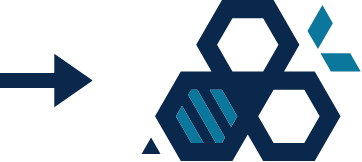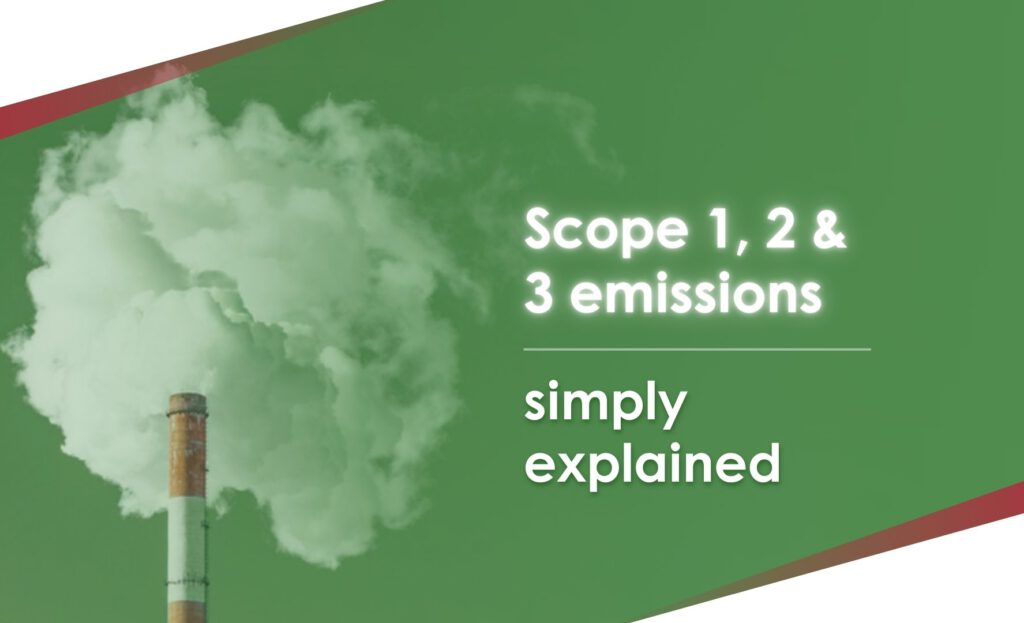CO₂ emissions are no longer just an issue for environmental organizations – they are a key factor for corporate success and future viability. If you want to operate more sustainably, meet regulatory requirements and gain the trust of customers, partners and investors, you need to understand your emissions – in detail. But not every issue is the same. This is precisely where the distinction between Scope 1, 2 and 3 comes in.
What are Scope 1, 2 and 3 emissions?
Companies must measure and reduce their carbon footprint in order to operate more sustainably and meet regulatory requirements. The most important international standard for recording greenhouse gas emissions is the Greenhouse Gas (GHG) Protocol. This distinguishes between three emission categories: Scope 1, Scope 2 and Scope 3. This classification enables companies to systematically analyze the sources of emissions and helps to develop effective reduction strategies.
Scope 1: Direct emissions
Scope 1 includes all direct emissions that a company causes directly through its own processes. These are caused, for example, by
- Combustion of fossil fuels in own stationary plants (e.g. natural gas for heating, diesel generators)
- Emissions from the company’s own vehicle fleet (company cars, trucks, machines)
- Industrial processes that release greenhouse gases (e.g. chemical reactions in production)
- Fugitive emissions, such as refrigerant losses from air conditioning systems or gas leaks
Example: A company operates its own fleet of vehicles. The fuel consumption of these vehicles causes GHG emissions that fall under Scope 1.
Relevance for companies:
- Scope 1 emissions are relatively easy to measure as they come from internal sources.
- Companies can influence these emissions directly, e.g. by switching to more efficient use of fuel consumption or more efficient use of resources.
Scope 2: Indirect emissions from energy procurement
Scope 2 includes all indirect emissions caused by a company’s grid-bound energy procurement. These include
- Electricity (electricity consumption in offices, production facilities or own data centers)
- District heating and cooling (e.g. heating energy purchased from an external provider)
- Steam and process heat for industrial applications
Example: A company obtains electricity from the public grid for its production halls. The emissions generated during electricity production fall under Scope 2.
Relevance for companies:
- Companies have the opportunity to reduce their carbon footprint by purchasing green electricity or using their own renewable energy (e.g. their own PV system).
- Many companies rely on power purchase agreements (PPAs) to secure renewable energy in the long term.
Scope 3: Indirect emissions from the value chain
Scope 3 includes all other indirect emissions that occur along a company’s entire value chain. These can be divided into two categories:
Examples of upstream emissions (occur before use by the company):
- Purchased goods and services (materials, supplier products)
- Transportation and distribution from suppliers (trucks, ships, aircraft)
- Employee business travel (flights, hotels, rail travel)
- Waste disposal and water consumption
Example: A company purchases electronic components from suppliers. The emissions generated during the extraction of raw materials, production and transportation of these components belong to Scope 3.
Examples of downstream emissions (occurring after production):
- Transportation and distribution of products sold
- Use of products sold (e.g. energy consumption of appliances)
- Disposal and recycling of products at the end of their life
- Investments and franchise emissions
Example: A car manufacturer produces vehicles that are used by customers. The generally estimated CO₂ emissions from the fuel consumption of the vehicles during their use fall under Scope 3.
Relevance for companies:
- Scope 3 is often a company’s largest source of emissions (up to 90% of total emissions).
- It is more difficult to control as it involves external suppliers and customers, for example.
- Companies can start here with sustainable procurement, more efficient products and a circular economy.

Why is it important to understand the distinction?
The categorization into Scope 1, 2 and 3 helps companies to analyze their CO₂ emissions in a targeted manner and take sustainable measures:
✅ Scope 1 & 2 can often be influenced directly, e.g. through energy efficiency measures, the use of renewable energies or switching to low-emission vehicles.
✅ Scope 3 requires a strategic approach to working with suppliers, customers and stakeholders to establish more sustainable value chains.
Regulatory significance:
- Companies in the EU must disclose their emissions in accordance with the Corporate Sustainability Reporting Directive (CSRD).
- Many investors and stakeholders are calling for transparent climate reporting.
- Companies can cut costs and gain competitive advantages in the long term by reducing CO₂ emissions.
How we can support you
Measuring and reducing Scope 1, 2 and 3 emissions can be a challenge – but with the right strategy and tools, it can be an opportunity. We support companies in systematically recording their emissions, developing effective climate strategies and meeting regulatory requirements such as the CSRD and the GHG Protocol.
Our services at a glance:
✔ Climate accounting: determination and analysis of your CO₂ emissions according to the GHG Protocol
✔ Reduction strategies: measures to reduce scope 1, 2 & 3 emissions
✔ Reporting & compliance: support with reporting in accordance with ESG requirements
✔ Supply chain analysis: Identification and optimization of emission sources in Scope 3
🔎Arrange a consultation now! Let’s find out together how we can successfully implement your sustainability goals.







